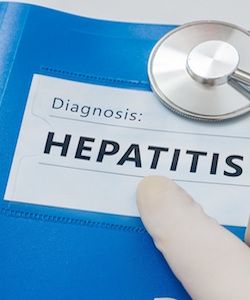Hepatitis C Testing Remains Low for Baby Boomers Despite Recent Increase
Hepatitis C testing only increased from 12.3% to 13.8% among baby boomers.

When the US Preventive Services Task Force (USPSTF) recommended that all baby boomers undergo a one-time hepatitis C screening in 2013, testing prevalence had increased two years later. However, the rate is still lower than officials would like to see.
Of the estimated 3.5 million people in the United States who are infected with hepatitis C, 80% were born between 1945 and 1965 (referred to as baby boomers). Since most people who are infected don’t know it, the USPSTF recommendation was meant to drive diagnoses and reduce the risk of progression to more serious liver disease, such as cirrhosis and liver cancer. While there was some progress, Ahmedin Jemal, DVM, PhD, and Stacey A. Fedewa, PhD, of Surveillance and Health Services Research of the American Cancer Society in Atlanta, Georgia, found that it was minimal.
Data from 23,967 baby boomers were gathered from the 2013 and 2015 National Interview Survey. A total of 21,827 participants had complete records, including self-reported hepatitis C blood testing.
Although small, there was a statistically significant increase in hepatitis C testing two years after the USPSTF recommendation was implemented—12.3% to 13.8% (P = 0.013). Only 10.5 million of the 76.2 million baby boomers in the country in 2015 were tested.
“Reasons for the overall slow uptake of testing may include barriers to preventive care; unapparent symptoms; lack of awareness of the need to be tested among patients, who may not be fully covered by insurers; and lack of physician awareness of the USPSTF recommendations,” the researchers detailed.
Men were more likely to be tested than women (prevalence ratio (PR): 1.25, 95% confidence ratio: 1.08, 1.44). People who had lived with someone with hepatitis were also more likely to get tested than those who did not share that experience (PR: 2.44, 95% CI: 2.01, 2.96).

People with just a high school diploma or less education had a lower testing rate than college graduates (PR: 0.63, 95% CI: 0.48, 0.82 vs. PR: 0.58, 95% CI: 0.48, 0.72).
Insurance type appeared to play an important role in predicting if a baby boomer had been tested for hepatitis C or not. Higher screening was found in those with Medicare plus Medicaid (PR: 1.83, 95% CI: 1.32, 2.53), just Medicaid (PR: 1.35, 95% CI: 1.04, 1.76), and military insurance (PR: 1.62, 95% CI: 1.16, 2.26), relative to privately insured adults. The researchers explained that the higher testing rate in people with military insurance could be credited to the ongoing efforts of the Veterans Health Administration, since veterans have a high prevalence of hepatitis C.
The team noted that their findings were substantially lower than what other studies had found. In one study, 90% of patients at a safety net clinic had been tested for hepatitis C. In another conducted at a New York community hospital, screening increased from 47% to 88%. The lower testing results in the recent study could be due to underreporting of testing. Also, this study was population-based while the others were institutional-based.
Despite the increase in testing following the USPSTF recommendation, there’s an overwhelming need to get baby boomers in doctors’ offices.
“These findings underscore the need for increased awareness for hepatitis C testing among healthcare providers and baby boomers and other innovative strategies such as state-mandated hepatitis C testing,” the researchers concluded.
The USPSTF recommendation follows that of the US Centers for Disease Control and Prevention (CDC) which urges baby boomers to get tested.
The study, “Recent Hepatitis C Virus Testing Patterns Among Baby Boomers,” was published in the American Journal of Preventive Medicine.
Related Coverage:
Merck Takes Major Write-Down on Hepatitis C Drug
Liver Specialist Refutes Study Claiming Hepatitis C Drug Dangers
There Might Be Too Much Emphasis on Risk Factors for Hepatitis C Screening